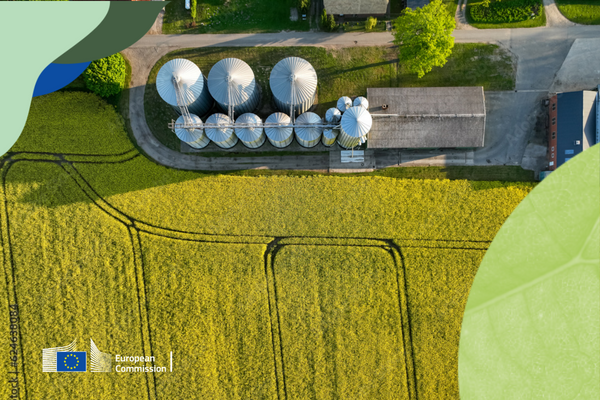
Bioenergy produced from agricultural, forestry and organic waste feedstock continues to be the main source of renewable energy in the EU, accounting for about 59% of renewable energy consumption in 2021, according to a new Commission report on bioenergy sustainability. Published this week as part of the 2023 State of the Energy Union Report and as required by the Governance Regulation, the report notes that primary solid biofuels (70.3%) represent the largest share of bioenergy, followed by liquid biofuels (12.9%), biogas/ bio-methane (10.1%) and renewable share of municipal waste (6.6%).
Commissioner for Energy, Kadri Simson said:
'From the start of this mandate, we’ve been committed to moving away from natural gas, towards cleaner options, like biomethane, renewable hydrogen, biogas and e-gases. Russia’s invasion of Ukraine and the energy crisis has highlighted the need to accelerate this transformation. This report shows we have made some progress, but we need to do more.'
Based on the reporting by Member States linked to their National Energy & Climate Progress Reports (NECPRs), most Member States have reported measures related to the promotion of biogas and biomethane. This is in line with the Commission proposal in the REPowerEU plan to accelerate the production of sustainably-produced biomethane, in order to reduce the EU’s reliance on imported fossil fuels. Indigenous biogas production in the EU in 2021 rose to 14.9 million tonnes of oil equivalent (mtoe), a 1.7% increase compared to 2020. Germany remained the largest producer (7.5mtoe – 50.4% of the total), followed by Italy (13.9%, 2.1mtoe), and France (9.4%, 1.4 mtoe). Belgium, Finland, Hungary, and Sweden did not report any biogas production.
The report provides details on solid biomass supply, which mainly comprises woody biomass/forest biomass (66%), biomass from organic waste (26%) - three-quarters of which was in Germany - and agricultural biomass (8%), notably in Sweden and Finland. Overall, primary supply of solid biomass in the EU has increased from 3,336,811 TJ in 2008 to 4,454,768 TJ in 2021, an increase of 33.5%. The largest growth of indigenous production of solid biomass in this period has been for wood pellets use (413%) and animal waste (351.9%).
In the transport sector, the report notes that renewable energy is continuously increasing. It should be highlighted that the use of advanced biofuels and other biofuels produced from feedstock listed in Annex IX of the Renewable Energy Directive as well as the share of renewable electricity has substantially increased over time. Overall, the final consumption of biofuels has increased by 39% in 2021 compared to 2013. Final consumption of biofuels in the transport sector in 2021 accounted for a total of 16.5 mtoe in the EU – a 39% increase since 2013 – with biodiesel accounting for roughly 80% of total biofuel consumption in the transport sector. Bioethanol was the second most consumed fuel type (18%), and biomethane and other liquid biofuels aggregate to less than 1%.
As regards heating and cooling, biomass fuels and bioliquids were used for the production of 17.3 mtoe of gross heat in the EU in 2021, notably using solid biomass (76.0%), followed by renewable municipal waste (18.1%) and biogases (5.0%).
In the electricity sector, 45.6 mtoe of biomass fuels and bioliquids were used to produce 14.6 mtoe of gross electricity in 2021. This was 15% of the total gross renewable electricity mix and 6% of the total gross electricity. 74% of gross electricity from biomass was produced in combined heat and power plants, mainly from solid biomass (54.8%), biogases (31.1%), and renewable municipal waste (11.6%).
Related Links
Details
- Publication date
- 27 October 2023
- Author
- Directorate-General for Energy
